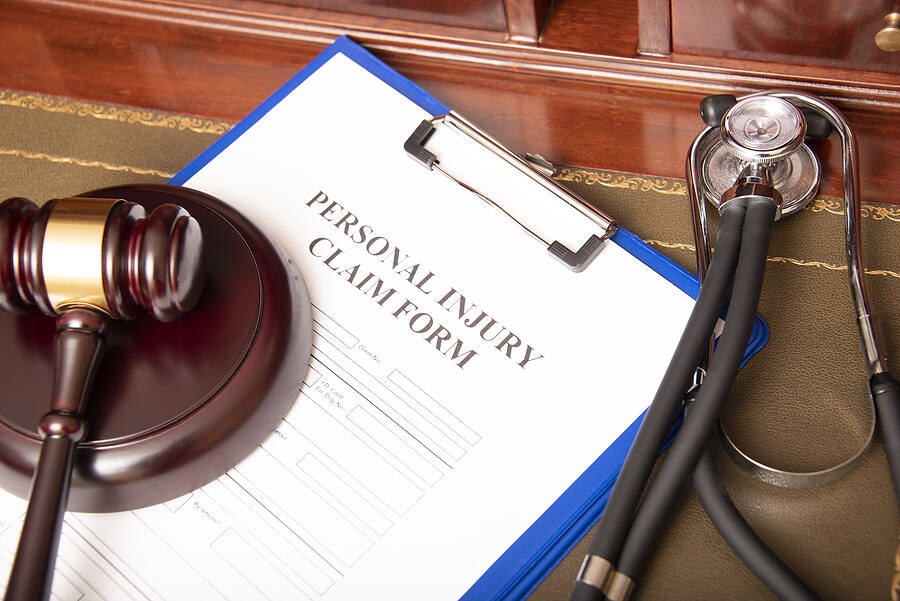
If you pursue a personal injury claim, you may come across the term demonstrable injury. This type of injury can be seen by the naked eye or detected on diagnostic imaging. A broken bone is one type of a demonstrable injury.
A non-demonstrable injury is often invisible to others. For example, you typically see whiplash. And, a soft tissue injury like whiplash may not show up on any diagnostic test.
While non-demonstrable injuries are no less real or painful for the injured party, the insurance company will try to downplay or dispute them. If you or your loved one have a non-demonstrable injury, you will need the help of an attorney to file a personal injury claim.
Demonstrable Injuries versus Non-demonstrable Injuries
If someone else’s negligence or careless actions injured you, you do not need to put a label on your injuries. You are in pain and cannot work. That is all that matters right now to you and your family.
Unfortunately, the insurance company does not see things the same way. They are for-profit businesses that are out to protect their bottom line. Insurance companies will challenge or deny any claim they can.
Black-and-white evidence, such as an X-ray, can prove demonstrable injuries. The existence of a non-demonstrable injury relies partially on the patient’s description of their symptoms. Insurance companies are quick to say that you are exaggerating or lying about a non-demonstrable injury.
Types of Demonstrable Injuries
Many times, a demonstrable injury is obvious to others. You do not have to be a doctor to realize that someone has a bruise, burn, or laceration. Some demonstrable injuries only appear on diagnostic imaging such as X-rays, MRIs, or CT scans.
Examples of demonstrable injuries are:
- Someone fractures their skull in a slip and fall accident at a grocery store
- A person breaks their wrist and arm in a car crash
- A nursing home resident has brain bleeding due to staff abuse
The mere existence of a demonstrable injury is not disputable.
Types of Non-demonstrable Injuries
A non-demonstrable injury will not appear visually or through medical imaging. One common type of non-demonstrable injury is whiplash. Whiplash, neck strains, or neck sprains are soft tissue injuries.
Other types of non-demonstrable injuries are:
- A person trips on an uneven sidewalk and sprains their ankle
- An unsupervised nursing home resident attempts to stand and walk across the room unassisted, but falls and sustains a concussion
- A passenger pulls their back muscles during a car crash
These types of injuries may face greater scrutiny from the insurance company.
Who decides whether my injuries are demonstrable or non-demonstrable?
Insurance companies often use a computer program to evaluate personal injury claims based on the information in your medical records.
Your doctor can still use objective measures to diagnose and determine the severity of a non-demonstrable injury. Your medical records should note observations like:
- Limited range of motion in any joint
- Muscle weakness
- Tenderness of a palpated body part
- Muscle spasms
- An abnormal posture
Detailed and specific medical records will make for a stronger personal injury claim.
What if I have both demonstrable and non-demonstrable injuries?
It is not uncommon for an accident victim to have both types of injuries. For example, someone may sustain whiplash, a concussion, and a broken bone in a car accident. When an individual has more than one injury, the insurance company will evaluate each injury separately.
Will I be denied a settlement if I only have non-demonstrable injuries?
If you have only non-demonstrable injuries, the insurance company may dismiss or devalue your claim. A personal injury attorney can help you make the strongest case possible so that you recover a fair compensation.
The insurance company may deny your claim for other reasons. For example, the insurance company may blame you for the accident.
How You Can Make a Strong Personal Injury Claim
After an accident, it can seem like so much is out of your control. But you can make a strong personal injury claim.
#1. See a doctor as soon as possible after the accident
If you were seriously injured or unconscious after your injury, you probably went to the ER via ambulance. But some injured people do not feel any pain or are not aware of their injuries right away. The adrenaline rush after an accident can make people appear okay when they are not.
After any accident, your doctor should see you. This initial visit is critical because it shows a correlation between the accident and your injuries.
If you wait several days before seeking medical treatment, this delay could weaken your legal claim. The insurance company could question whether you were injured in the accident or in another incident that happened afterward.
#2. Keep your medical appointments
You may have ongoing doctor or therapy appointments. If you cancel or postpone these visits, the insurance company could argue that your injuries are not that serious or that you do not need medical care. Attending your appointments is good for your recovery and strengthens your legal case.
#3. Be honest about your symptoms
Some people will downplay the nature of their injuries, their physical pain, or their emotional distress. For many people, this can happen automatically because they equate being sick or injured with being weak.
Life after an accident is not easy. It’s difficult to admit that someone hurt you or your loved one.
Downplaying your injuries will not make you get better any faster. It also won’t make your legal case process any faster. Dishonesty about your symptoms will jeopardize your settlement amount.
#4. Be specific about your symptoms
The more specific you are when you describe the impact of your injuries, the more helpful it is for your doctors and other healthcare providers.
Vague statements that do not provide insight into your injuries include:
- I feel tired.
- I can’t play with my kids anymore.
- I’m practically bedridden.
More specific statements that describe your injuries and how you feel are:
- I sleep 10 hours at night, yet I never feel fully rested. It’s difficult for me to stay awake during the day. I fall asleep if I sit down.
- I can’t play basketball with my kids because it hurts too much to raise my arms. Also, I feel nauseous when I move my head too quickly.
- The only time I don’t feel pain is when I’m lying down on my side. It hurts to stand, walk, or sit upright.
If you have difficulty describing your symptoms or how your injuries affect your life, talk to your loved ones. They may notice changes or difficulties that you don’t.
#5. Ask for a copy of your medical records
You have the right to request a copy of your medical records, including any doctors’ notes. Healthcare providers are human, too, and can make honest mistakes or omissions. Sometimes, a doctor may be rushed or misunderstand your symptoms.
Your medical records are a crucial part of your personal injury claim. These documents need to be complete and accurate.
#6. Have someone come with you to your medical appointments
You may find it helpful to have a family member or trusted friend attend your appointments with you. They can take notes while you focus on your discussion with your doctor.
Are demonstrable injuries worth more?
The insurance company may assign a higher monetary value to a demonstrable injury. However, whether an injury is demonstrable or non-demonstrable isn’t the only factor that determines a settlement amount.
How much is a personal injury settlement?
An insurance payout compensates you for the damages you incurred due to the accident.
These damages are either economic or non-economic.
- Economic damages have a set cost associated with them, such as medical bills, lost income, and property damage.
- Non-economic damages are the intangible effects of a personal injury, such as pain and suffering or emotional distress. When you hire an attorney, they will assign a monetary value to your non-economic damages. In some jurisdictions, laws cap the money you can receive for non-economic damages.
There is no such thing as an average personal injury settlement, as these damages are highly individual.
Economic damages in a personal injury lawsuit
If someone else’s careless behavior or negligence injured you, you may recover compensation for:
Medical expenses
- Doctor visits
- Hospital stays
- Diagnostic tests
- Surgeries
- Physical therapy
- Occupational therapy
- Counseling
- Prescription medications
- Ambulatory aids: wheelchair, walker, cane
Property damage
- The repair or replacement of your vehicle
- Reimbursement for any other personal property that was damaged during the accident
Lost income
- While you recover
- If you are unable to return to work
- If you must work fewer hours
Professional services, if you have to hire someone to do tasks that you can’t perform anymore
- Childcare
- Housecleaning
- Lawn care
Home health aide, if you require assistance with:
- Taking a bath or a shower
- Getting dressed
- Meal preparation
- Medication management
After an accident, you may also recover non-economic damages.
Non-economic damages in a personal injury lawsuit
You may deserve compensation if you experience:
- Physical pain
- Emotional distress
- Anxiety and depression
- Post-traumatic stress disorder (PTSD)
- A loss of intimacy with your spouse
- Inability to provide guidance or care for your minor children
While money can’t undo your injuries, a settlement holds the responsible party accountable for their negligence.
How do I know if I can pursue a personal injury claim?
The only way to know if you have a valid legal case is to speak with an attorney. Many personal injury law firms offer a free case evaluation.
All personal injury claims are based on the same four elements.
1. First, there was a duty to exercise reasonable care.
This first element means that an individual or entity has a responsibility to act in a certain way.
- Anyone who operates a motor vehicle must obey traffic laws, not be distracted, and not be under the influence of alcohol or drugs.
- Business owners must keep their premises safe and in good repair.
- Companies must manufacture safe products.
- Nursing homes must provide a safe and caring environment for residents free from abuse and neglect.
2. Then, there was a failure to exercise that reasonable care.
The second element of a personal injury case is that the individual or entity acted negligently or recklessly.
- A truck driver got behind the wheel after drinking.
- A restaurant owner failed to repair ripped carpeting.
- A medical device company manufactured a faulty product.
- A nursing home resident experienced ongoing neglect at their understaffed facility.
3. And, this failure caused harm.
The third element is that this negligence or recklessness caused harm.
- The drunk truck driver didn’t stop at a red light and crashed into a car.
- A restaurant patron tripped on the carpet and fell.
- A medical device malfunctioned and injured the patient.
- The nursing home resident lost weight and became dehydrated from neglect.
4. Lastly, this harm resulted in damages.
This last element requires economic or non-economic damages.
- The car was totaled and injured both occupants.
- The restaurant patron broke his/her arm, missed two months of work, and needed surgery.
- The patient with the faulty medical device required hospitalization.
- The nursing home resident experienced emotional distress and incurred medical bills from staff neglect.
If an attorney finds that your accident meets these four elements, they may pursue a personal injury claim for you.







